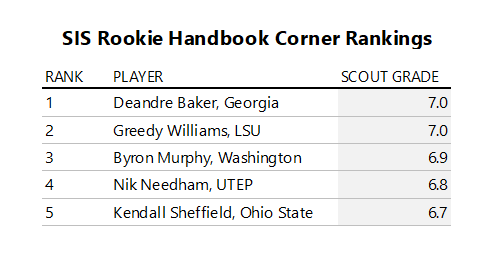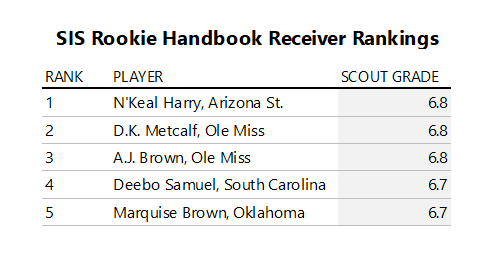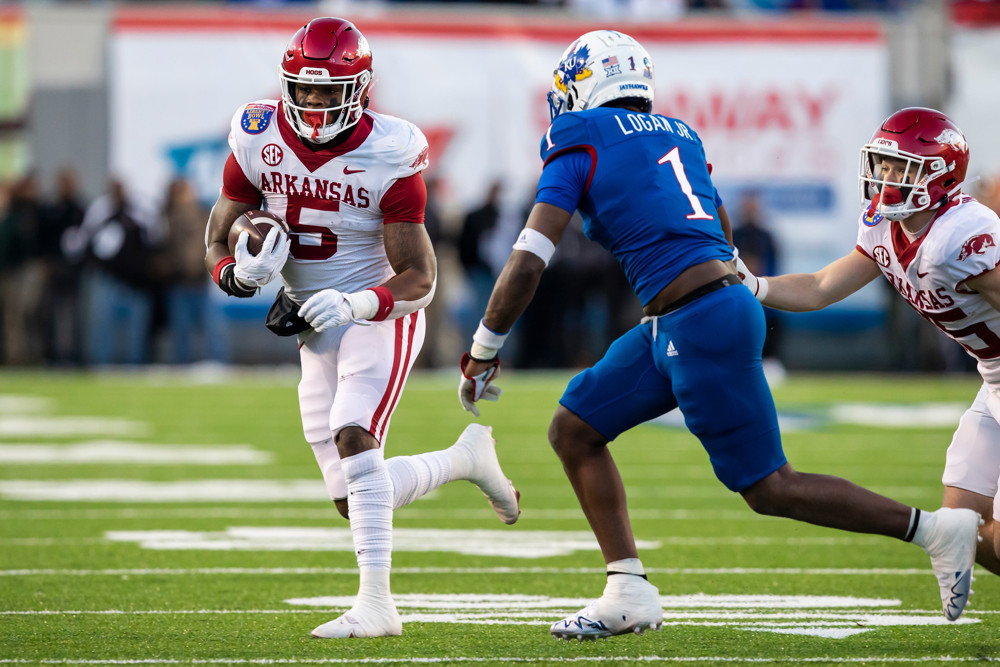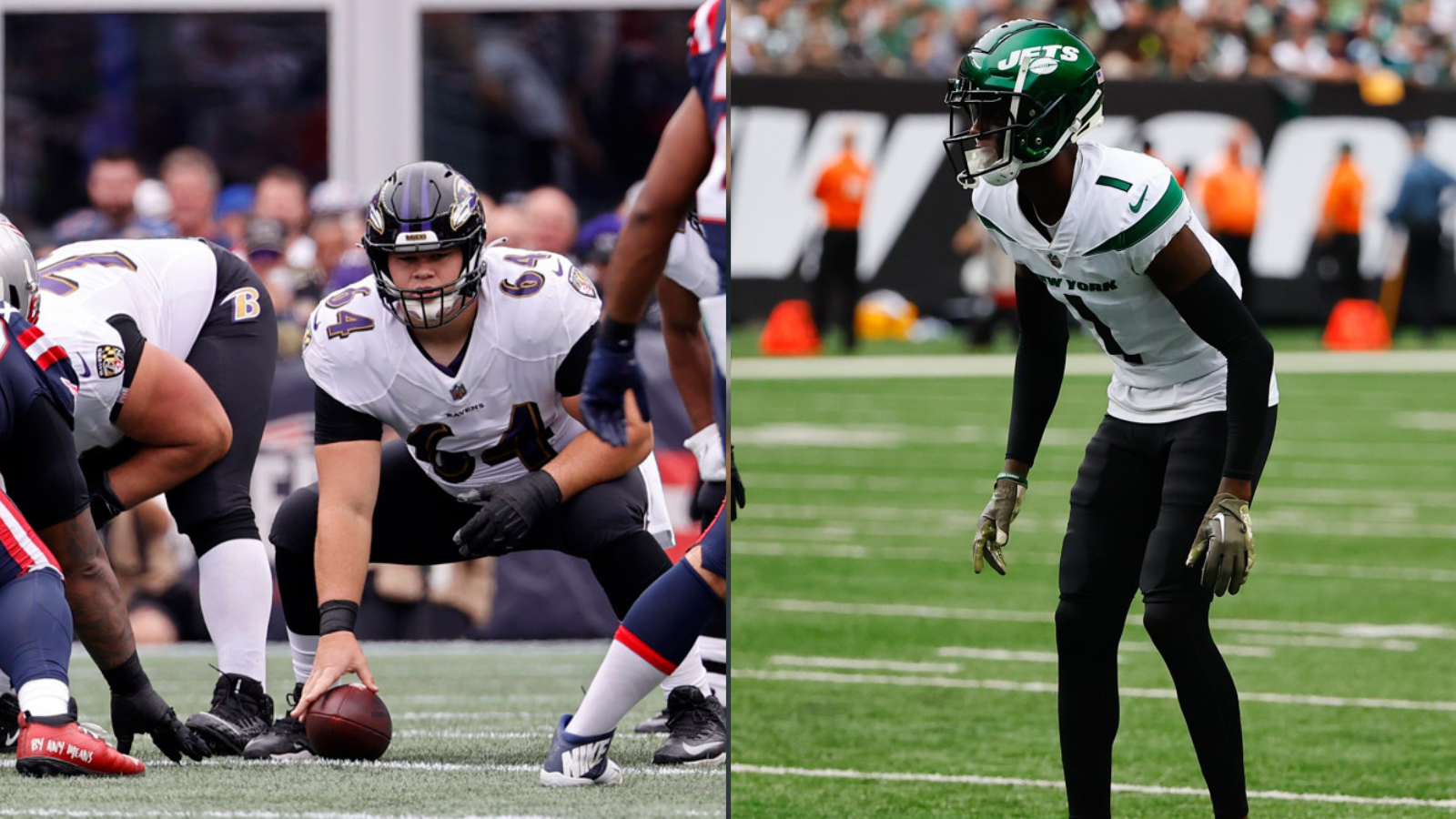With the draft a little more than a week away, teams and draft analysts alike are finalizing their draft boards. For the most part, they look a lot different than they did only a few months ago. A couple of the highest rated prospects from the SIS Rookie Handbook are among those whose stock has taken a hit during the pre-draft process.
Greedy Williams
In the SIS Rookie Handbook, Greedy Williams was one of nine players to receive a grade of 7.0 or better, and was tied with DeAndre Baker as the highest rated corner grade. Initial mock drafts had Williams as a potential top 5 pick, and a virtual lock for top 10. Since then though, Williams has seen his stock taking a bit of a tumble. Mel Kiper has Williams 22nd on his big board, and his 3rd corner overall, trailing both Deandre Baker and Byron Murphy. Most mock drafts now have Williams as a mid to late first round pick, with some putting him as low as the top of the second round.

What he does well:
What’s interesting about Williams is that his ability to cover has never really been in question. In 2018 he allowed a deserved catch percentage of only 60%, and a QB Rating against of only 43.3. Both of those figures ranked as the second best among draft eligible cornerbacks, and were ahead of Baker and Murphy.
Part of what makes Williams so good in coverage is his ability to make quick transitions and stay patient on deep routes and double moves. While there was some worry after he struggled in his combine drills, particularly the pedal and turn, his numbers and film show little reason for concern overall.
On throws at least 20 yards downfield in 2018 Williams allowed only 6 completions for 172 yards and a touchdown on 22 targets, a yards per attempt of only 7.8. More impressive, while lined up on the outside in man coverage, receivers attempted a double move on Williams 9 times. The lone target fell incomplete. It is a relatively small sample, but illustrates his ability to suppress targets and is strong evidence of his ability to stay patient on long developing routes.
Where he comes up short:
The biggest reason for Greedy’s fall from the top of big boards is his tackling ability. Take this quote from Mel Kiper that echoes the concerns of a number of NFL teams:
“Opinions are already complete now, and I think the tackling and the ability to be an 11th man on that defense, and not play with 10 and have a big running back coming around the corner and make a business decision on whether you tackle or you don’t. Again, you’ve got to tackle these bigger receivers, these tight ends in space, because it’s an extension of the running game. Or these short passes. You can’t be missing tackles in the open field or around the line of scrimmage. Again, tackling not just running backs, but receivers and tight ends, that’s going to be the issue.”
There is room to debate just how important it is for corners to be strong tacklers, especially when they are as strong in coverage as Williams, but there is no denying that tackling is an issue. Williams had only 34 combined tackles in 2018, which did not even rank him in the top 200 among all college corners. He also had a broken tackle percentage of 15.4%, which was among the worst of all draft eligible corners. Put into perspective, fellow top prospects Deandre Baker and Byron Murphy came in at 2.4% and 8.2% respectively, both ranking in the top 10 among draft eligible corners.
Some of this is scheme related as Williams spent 63% of his snaps in man coverage in 2018, but his poor tackling technique is certainly a concern for teams that like to use corners in run support, and is the main culprit for his slide as we approach the draft.
N’Keal Harry
There has never really been a consensus among draft analysts about the top WRs in this years draft, and the picture hasn’t become much clearer as we approach the draft. One player that seems to be sliding though is N’Keal Harry, who comes in as the top receiver in the SIS Rookie Handbook.

Once in contention with Metcalf for the top spot among receivers, Harry has been usurped in a most rankings by the likes of A.J Brown, Deebo Samuel, Marqise Brown and even J.J. Arcega-Whiteside. What’s different about his slide though is that there is nothing new you can point to that explains it. Sure, D.K. Metcalf showing up to the combine looking like a super human didn’t help, but Harry had a strong combine performance in his own right, posting a 4.53 40-yard dash, 38.5″ vertical, and 27 reps on the bench.
What he does well:
In 2018 Harry turned 90 catchable targets into 73 catches, 1,088 yards and 9 touchdowns, a QB Rating when targeted of 114.9. His ability to use his size to make plays downfield is part of what makes him such an intriguing prospect. Harry ran 47.2% of his routes down the field 2018, and on those targets racked up 17 catches for 421 yards and 5 TDs. Good for a rating of 129.75.
Harry is also dynamic with the ball in his hands after the catch, using his unique combination of size and speed to generate additional yardage. In 2018 he averaged 7.1 yards after the catch, and his 308 yards after contact ranked 5th in the NCAA.
Where he comes up short:
While Harry has shown a knack for finding soft spots in zone coverage, he fails to consistently create separation against man – particularly on shorter routes – and rather relies on his size, length, and catch radius to make plays. While this served him well in the college ranks, relying solely on size and athleticism gets exponentially more difficult against NFL corners.
To get an estimate of separation we looked at the amount of yards between when a receiver first caught the ball, and when he was first contacted by a defender. (Pass breakups and interceptions are counted as zeroes.) When looking at targets less than 15 yards downfield, Harry averaged about 2.4 yards against zone, but only .13 yards against man coverage. His numbers against man ranked him 2nd worst among draft eligible receivers, and 303rd of 313 receivers with at least 25 targets overall.
Separation is not always everything though, especially for a player who has the size and athleticism of Harry. While he struggled to consistently separate, it is also worth pointing out that some of the players in the NFL who find themselves amongst the trailers in this metric include A.J. Green, DeAndre Hopkins, and Julio Jones.


